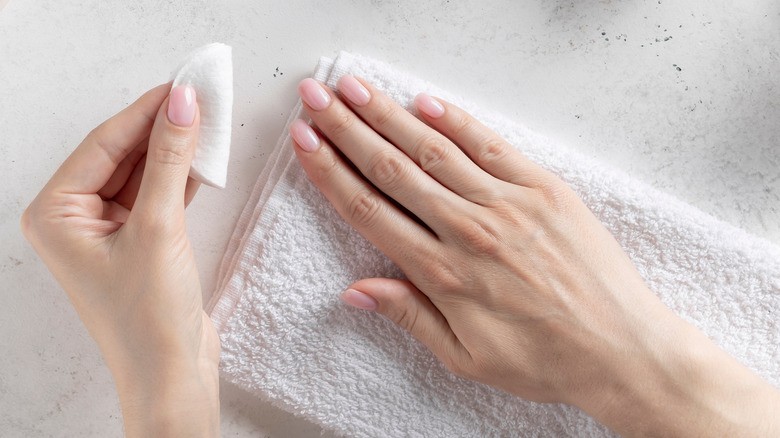
Acetone Vs. Non-Acetone Nail Polish Removers: What Is The Difference?
When it comes to removing nail polish, the choice between acetone and non-acetone nail polish remover often sparks debate. Each type has its own set of characteristics, advantages, and potential drawbacks. Understanding these differences can help you select the right product for your needs and ensure your nails stay healthy and beautiful.
What Is Acetone Nail Polish Remover?
Acetone is a powerful solvent commonly used in nail polish remover products. It is highly effective at breaking down even the most stubborn nail polish, including gel and glitter varieties. This makes it a go-to choice for professional salons and those looking for quick results at home.
However, the strength of acetone comes with a downside. It can strip the natural oils from your nails and cuticles, leaving them dry and brittle. If you frequently use acetone-based products, it’s important to follow up with hydrating nail care routines to maintain nail health.
What Is Non-Acetone Nail Polish Remover?
Non-acetone nail polish removers are typically made with gentler solvents like ethyl acetate or isopropyl alcohol. These products are ideal for people with sensitive nails or skin. While they may take longer to remove nail polish, they are less likely to cause dryness or irritation.
Non-acetone removers are also kinder to nail extensions or artificial nails, as they are less likely to weaken the adhesive. For everyday use, this option is preferred by those who prioritise gentler nail care.
Key Differences Between Acetone and Non-Acetone Nail Polish Removers
- Effectiveness: Acetone works faster and is more effective at removing stubborn nail polish, whereas non-acetone options are milder but may require more effort.
- Impact on Nails: Acetone can dry out nails and cuticles, while non-acetone products are less harsh and more suited for frequent use.
- Usage: Acetone is best for removing tough nail polishes like gel or glitter, while non-acetone removers are suitable for regular nail makeup products and natural nails.
When to Choose Acetone Nail Polish Remover
Acetone nail polish remover is ideal when you need to remove heavy-duty nail polish quickly. If you frequently use dark or glitter nail polish, this type of remover can save time and effort. Be sure to follow up with a nourishing hand cream or nail oil to combat dryness.
When to Choose Non-Acetone Nail Polish Remover
Non-acetone removers are a better choice for those who value gentler nail care. They work well with lighter nail polish shades and are safer for natural and artificial nails. Incorporating these into your makeup products collection ensures a versatile and skin-friendly option.
Tips for Nail Care After Using Nail Polish Removers
Regardless of the type of nail polish remover you choose, it’s crucial to maintain a healthy nail care routine. Here are some tips:
- Moisturise Regularly: Apply a hand cream or cuticle oil to keep your nails and surrounding skin hydrated.
- Avoid Overuse: Limit the use of nail polish removers to prevent excessive dryness.
- Choose Quality Nail Makeup Products: Invest in high-quality nail polishes and removers to minimise damage to your nails.
Conclusion
Both acetone and non-acetone nail polish removers have their unique benefits and drawbacks. The choice ultimately depends on your specific needs and preferences. Acetone is highly effective but can be harsh, while non-acetone removers are gentler but may take longer to work. By understanding the differences and following a consistent nail care routine, you can keep your nails healthy and ensure a flawless finish with your favourite nail makeup products.


















